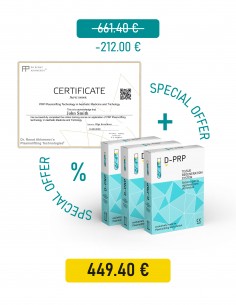Plasmolifting PRP Tubes: A Promising Approach in Wound Healing.
The term lifting is translated from English as a lift. In cosmetology, the lifting procedure has a broader meaning. With the help of various methods of its implementation, it is possible to achieve not only skin tightening, but also rejuvenation of its structures, cells and fibers. One of such modern techniques is PRP-plasmolifting (PRP therapy). This is a patented skin revitalization (rejuvenation) procedure, which is carried out in a physiological, natural way.
The essence of the PRP-plasmolifting technique.
In various fields of medicine, the technique of autohemotherapy is used. It consists in injecting the patient's own blood into the tissues of the area of their damage or inflammation. This helps to increase the functional activity of the immune system, as well as to stimulate the processes of regeneration (restoration) of tissues in the area of damage or inflammatory reaction.
This biological effect is due to the fact that blood platelets after its introduction into tissues during PRP therapy (autohemotherapy) secrete a significant amount of biologically active protein compounds (growth factors) that stimulate the processes of division, cell maturation and tissue repair. In the course of further study of the therapeutic effect of PRP therapy, physiologists noticed that an increase in the number of platelets significantly increases the processes of tissue regeneration. This was the basis for the development of the PRP-plasmolifting technique.
The essence of the technique is that not whole blood is injected into tissues that require restoration and regeneration, but its plasma containing a large number of platelets (Platelet Rich Plasma or platelet-rich plasma). There are more than 1 million platelets in 1 ml.
The mechanism of the effect after the introduction of platelets into the tissue
Platelets are blood plates that are formed in the red bone marrow by separating them from megakaryocytes (large progenitor cells). This process is called thrombopoiesis. It is regulated by a special compound - thrombopoietin.
After separation from the megakaryocyte, platelets enter the blood, where their average life expectancy is 5-9 days. Their main biological function is the formation of a blood clot to prevent bleeding from small and medium-sized vessels. Platelets produce a number of biologically active compounds that stimulate the healing processes of the tissues of the damaged area.
The realization of the biological effects of platelets during the use of PRP-plasmolifting is carried out due to their isolation of a number of biologically active compounds - growth factors. To date, more than 30 representatives of these substances have been studied. The main ones are:
Epidermal growth factor. It has a stimulating effect on the growth, proliferation (increase in number) and differentiation (maturation) of epithelial cells due to the effect on their specific receptors.
Platelet growth factor. It enhances vascularization, namely, the formation of new vessels of the microcirculatory bed, which provides better blood flow and tissue nutrition.
Vascular endothelial growth factor. Stimulates tissue vascularization and angiogenesis (formation of new vessels). It is one of the factors of the system that provides nutrition and oxygen delivery to the tissues.
Fibroblast growth factor. It is directly involved in the regeneration of tissues, as well as the restoration of their intercellular substance by stimulating the growth of fibroblast cells (they synthesize collagen, elastic fibers and intercellular substance).
Transforming growth factor beta. It controls the growth and differentiation of cells, prevents their excessive proliferation, and also has a regulating effect on tissue vascularization.
The biological functions of these growth factors make it possible to realize the rejuvenating effect of PRP therapy in cosmetology.

Results 1 to 1 of 1
-
06-11-2023, 10:43 AM #1
Plasmolifting PRP Tubes: A Promising Approach in Wound Healing

 LinkBack URL
LinkBack URL About LinkBacks
About LinkBacks




 Reply With Quote
Reply With Quote